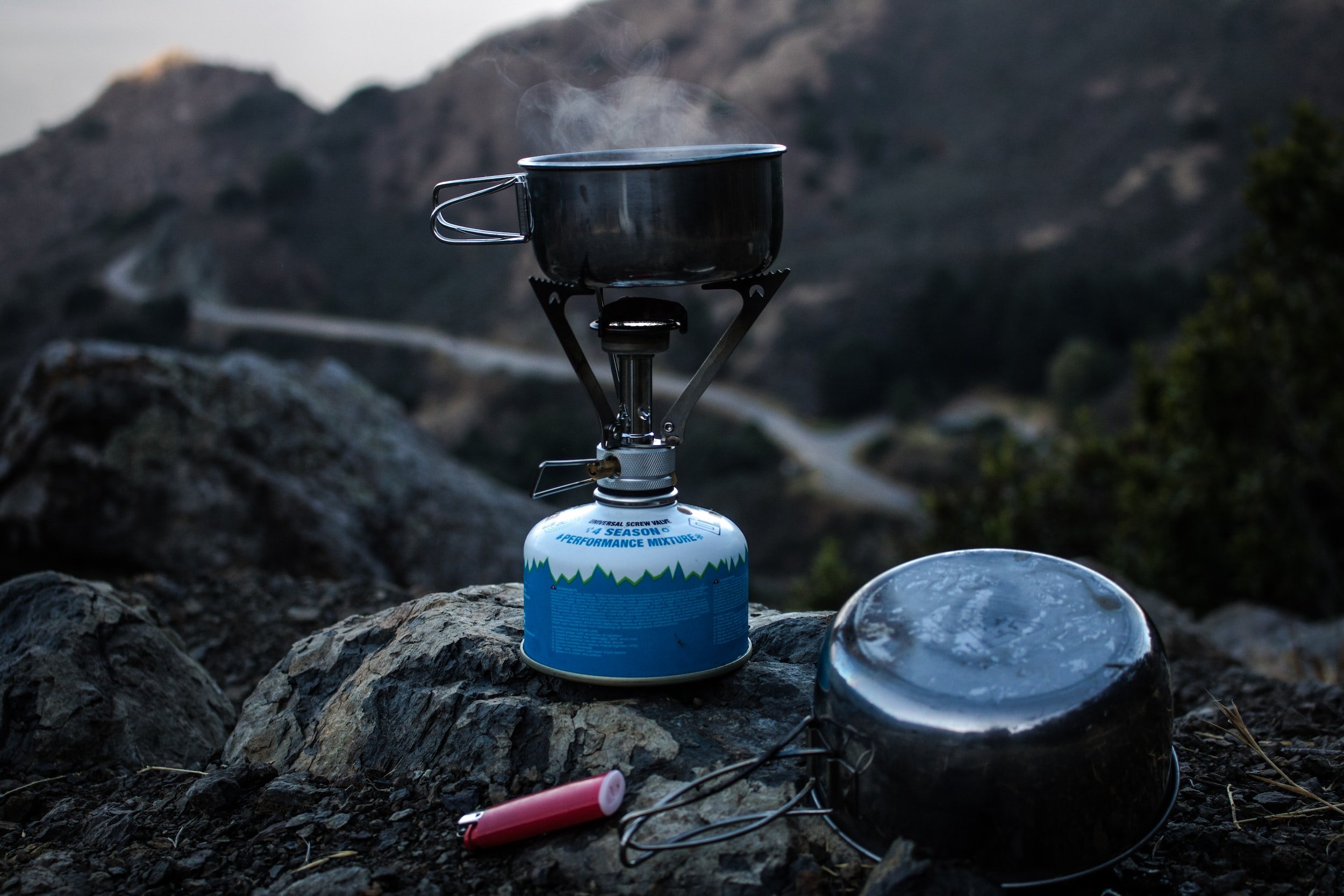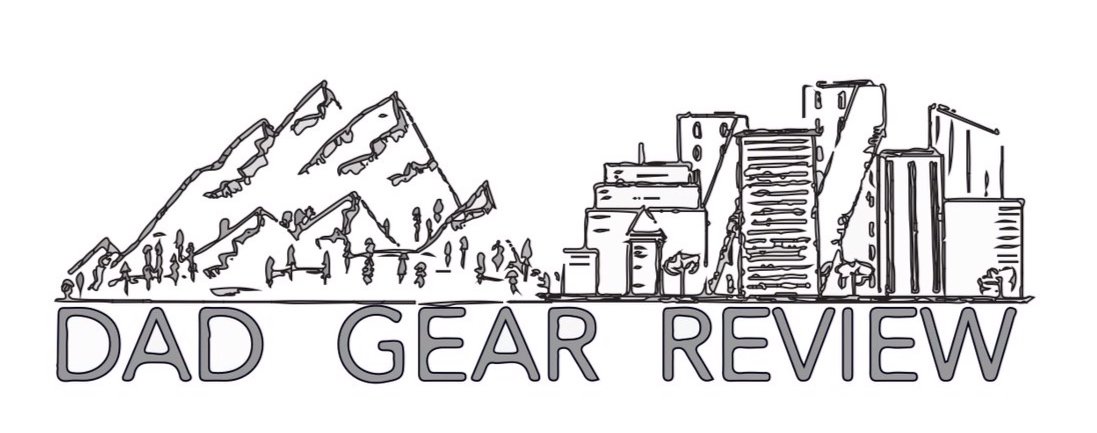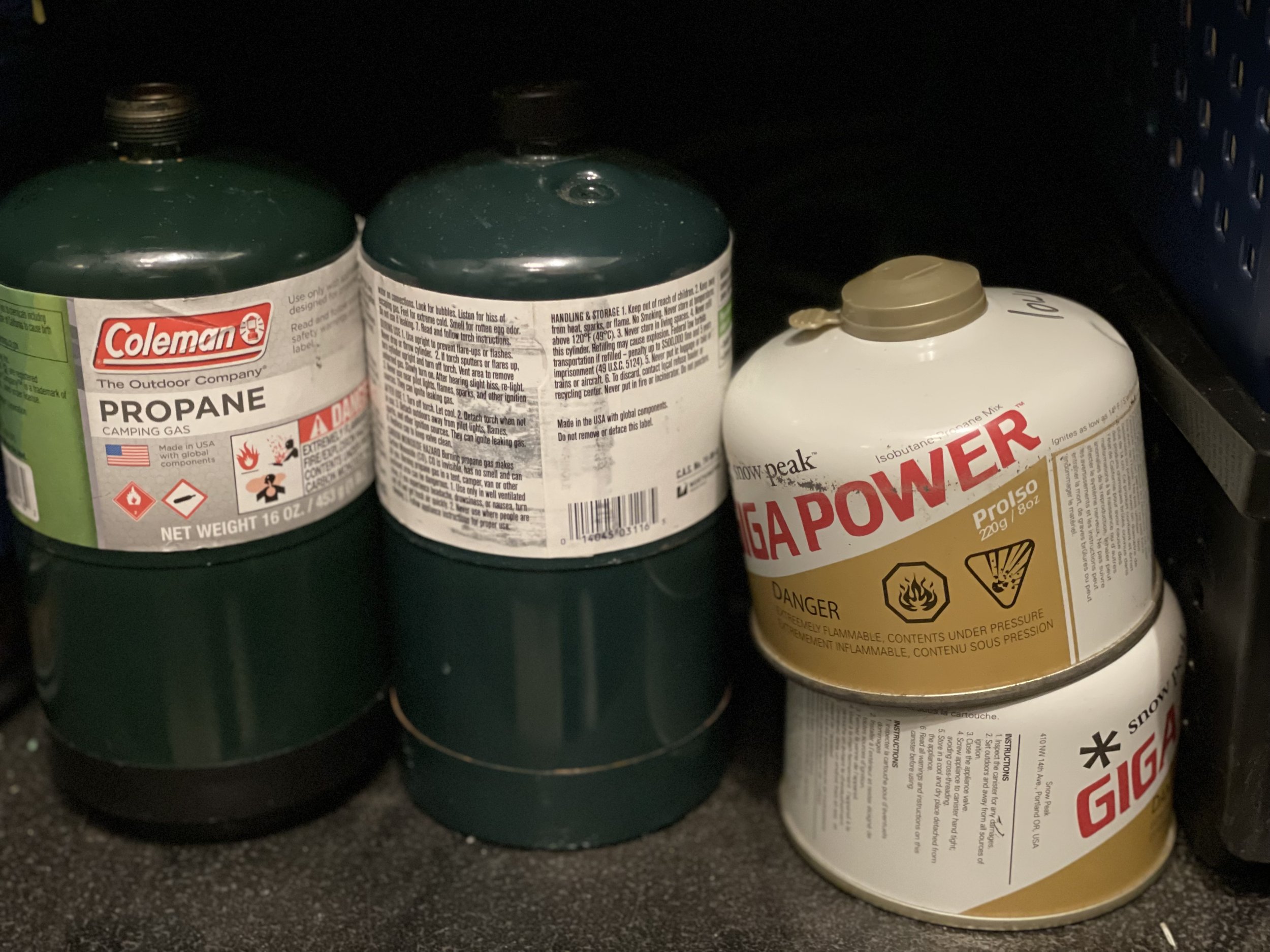
How to Safely Dispose of Used Camping Fuel Canisters
Anyone who does a fair amount of camping, mountaineering, or multi-day trekking surely has a few more puffers, packs, and pairs of hiking socks than they can fairly justify. But that’s OK — having a good deal of gear is good clean fun, and a buildup of it, so to speak, is natural in the course of things.
But one type of camping and trekking supplies that also tends to build up over time is a glut of partially-used camp fuel tanks, and those are not as much fun. You’re left to wonder if this or that tank of isobutane propane has enough fuel in it for your two-day campout. Or if that old tank of classic Coleman propane is still even safe to use. (Wondering how long can you store camp fuel? It’s about five to seven years for an unused tank provided it’s kept in a cool, dry place, and it’s about two years for used tanks of camp fuel, FYI.)
If you have several empty or almost empty tanks of camping fuel tucked onto a garage shelf or stuck into the back of a closet, first off, congratulations on being a legit outdoorsy person. And if you’re wondering how to dispose of camping propane tanks safely, thanks for also being an eco- and fellow human being-friendly person, too, because disposing of camping fuel canisters improperly is not good for the earth or for anyone on it.
So, what’s to be done with old camp fuel? Can you throw away camping gas canisters? No, as per the official website of the city of New York: “they are pressurized and may explode when compressed in the garbage truck.” Which is not good. They can also burst if punctured while still partially filled with fuel and, beyond the explosion risk of it all, camping gas tanks are of course a fire hazard as well.
Dispose of Camping Fuel Tanks Via the Professionals
The easiest way to dispose of camping gas canisters is to have someone else take care of it for you — someone with professional know-how.
You can turn in camping gas cans at most any reputable camping and outdoor supply store, as well as at many hardware stores. Call and ask about the store’s camp fuel tank collection policies before you just show up, and also make sure to ask about exchange or other incentive options.
Barring a convenient camping or hardware store that accepts camp fuel tanks, almost any decent recycling center will take in old fuel tanks and will properly dispose of them for you, albeit sometimes at slight cost.
DIY Camp Fuel Disposal
If you can’t get an old tank of camping gas to a shop or recycling center for professional disposal, no worries: you can safely drain the old gas from a camp fuel tank and ready the canister for safe recycling yourself.
Essentially, you just need to release as much of the gas as you can — by burning it off with a stove, running a stove’s valve open without ignition, or by using a dedicated venting tool — and then you need to perforate the fuel can several times to prepare it for recycling in with the rest of your metals.
As there’s always some risk when you take things like this into your own hands, we asked the pros to sound off here.
Michael Mojica, founder of the outdoor hardware company Outdoor Element, shared his camp fuel can disposal know-how with Dad Gear Review, and that know-how includes Mojica having literally designed a tool that makes safe camp fuel can disposal easy.
He told DGR: “My family loves camping and hiking, which means a simple camp kitchen is a must [but] I had two pain points with my minimalist setup. One, I’d burn my hands using the integrated pot handles, and two, once my fuel canisters were empty, I didn't know what to do with them. But I was pretty sure I wasn’t supposed to just toss them!”
So what did the Outdoor Element team do? They went in search of a solution and, unable to find one, they created it. Mojica said: “We surveyed over 1,100 outdoor enthusiasts. Turns out I wasn’t alone. Many people burn themselves on integrated pot handles and over 66% of people didn't know how to properly dispose of used canisters. At that point, we knew there was room for both innovation and education.”
That innovation would be OE’s Handled™️ device, which can be used to safely grab onto lightweight pots and pans, and that can help prepare fuel cans for safe disposal. Mojica spoke to the latter capacity of the hardware, saying: “To properly recycle fuel canisters, the gas must be fully evacuated and the canister must be pierced to ensure they are not pressurized. The top arm of Handled disassembles from the lower arm by removing the cotter pin near the gripping jaws. Once separated, the top arm of Handled has a vent nut and puncture point that can be used to properly dispose of these camping fuel canisters.”
“Once the fuel canister is considered empty, the nut screws to the top of the canister, venting its remaining gas. Once empty, the nut acts as a pivot point and the top of Handled becomes a lever arm to simply and safely puncture holes in the canisters. Now that the canister is fully evacuated and no longer a pressurized system, it can be safely tossed into the recycle/trash bin.”
And please do follow the proper steps to dispose of camp fuel tanks! Michael Mojica also told us this harrowing anecdote: “After talking to firefighters in the Denver area, it turns out they go to the landfill twice a week to put out fuel canister fires. Another firefighter shared how they hate going into garage fires because they know there are a couple of ‘empty’ one-pound canisters waiting to become missiles.”
Handled™️ images and video c/o outdoor element




